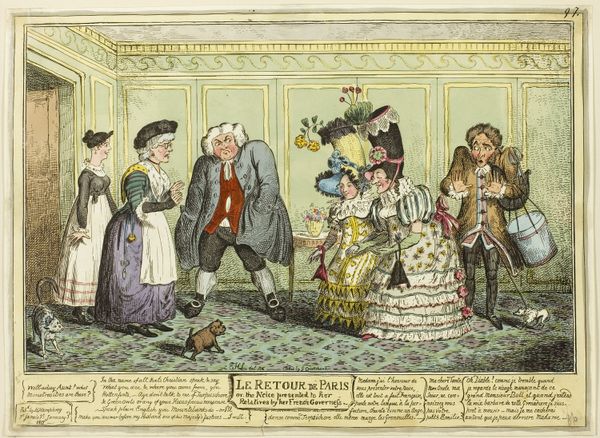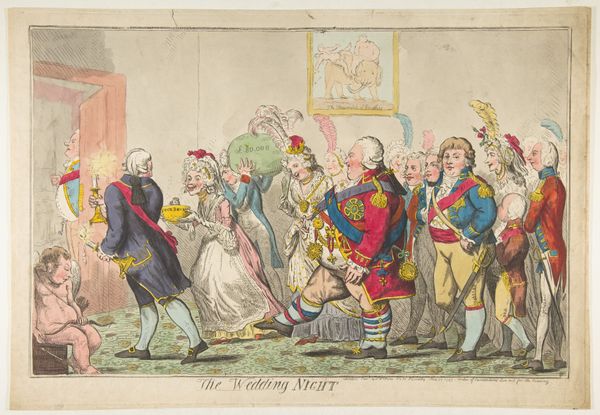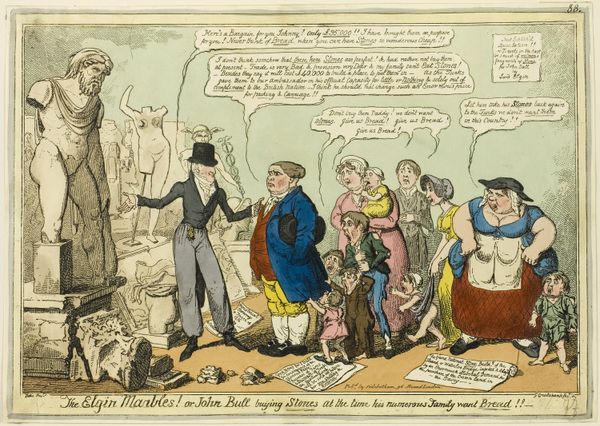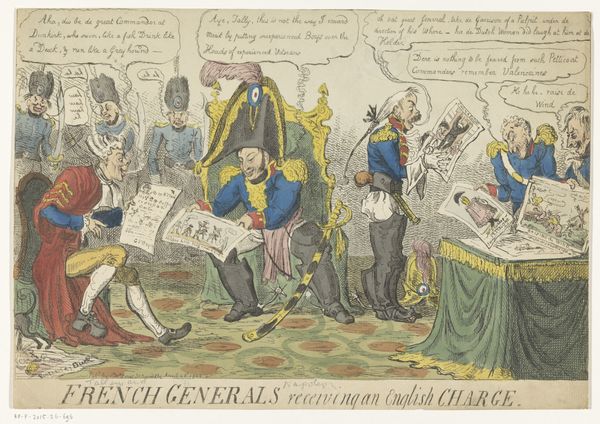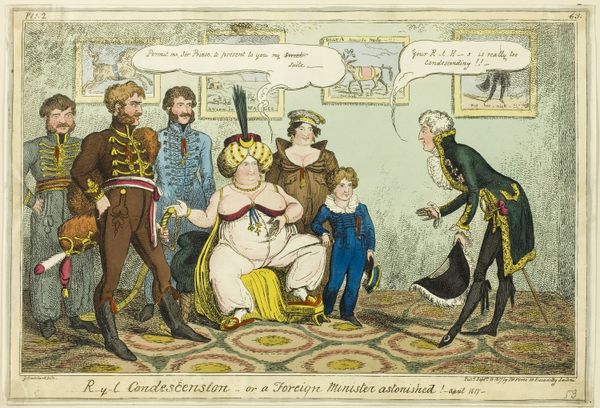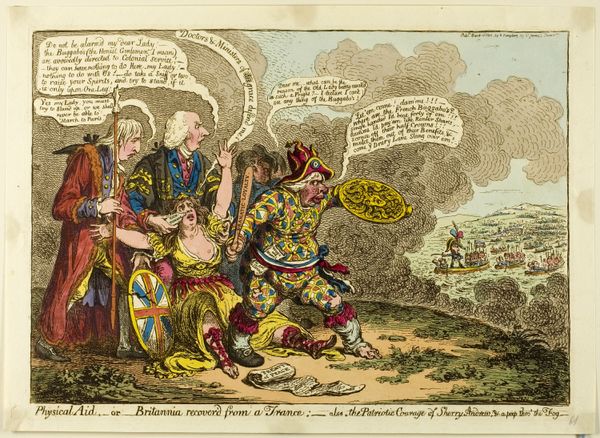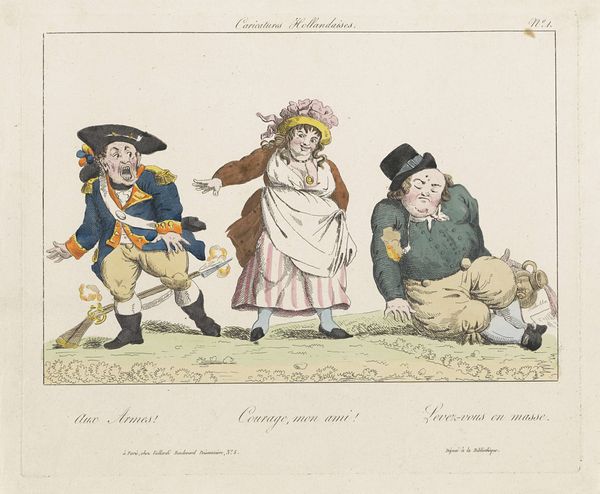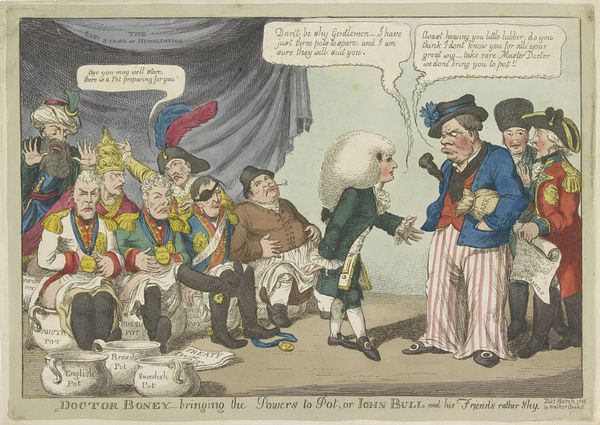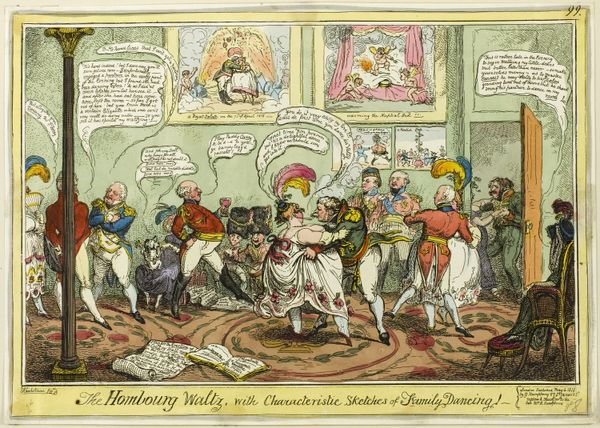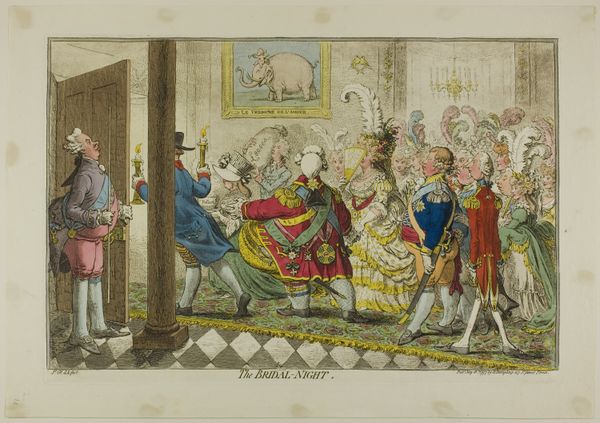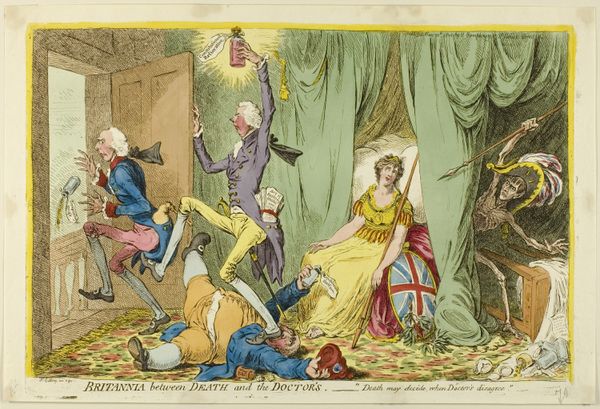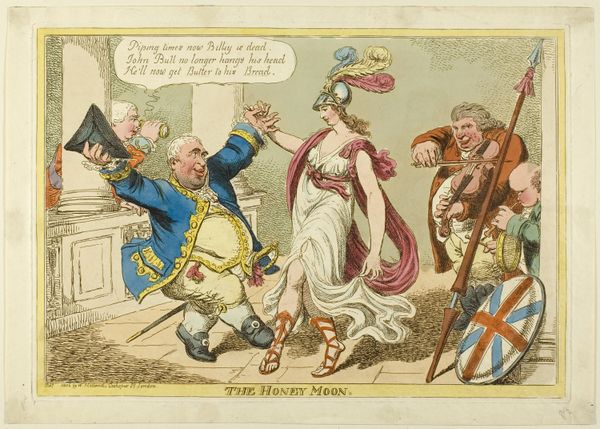
drawing, print, paper, watercolor, engraving
#
portrait
#
drawing
#
narrative-art
# print
#
caricature
#
figuration
#
paper
#
watercolor
#
england
#
romanticism
#
line
#
cityscape
#
watercolour illustration
#
engraving
Dimensions: 226 × 342 mm (plate)
Copyright: Public Domain
Editor: This is "A Scene in the New Farce Called The Rivals" by Charles Williams, created in 1819. It's a print, drawing, and watercolor on paper, and it really strikes me as chaotic! There are so many figures and details crammed into the composition. How do you interpret this work? Curator: Immediately, the symbols of dynasty jump out. We see the ritualistic presentation of an heir, a key image of power and continuity, even if presented here in a caricatured style. But look closer: who truly holds the power? Notice how speech bubbles, seemingly trivial, reveal anxiety about succession and control, echoing anxieties about social mobility prevalent at the time. How might anxieties become inscribed as satire? Editor: So, you're saying the satire reveals underlying power dynamics, despite the comedic presentation? I hadn't really thought about the speech bubbles in that way, more just as jokes. Curator: Exactly. These images, filled with contemporary figures and anxieties, served as a pressure release valve. This wasn't merely a funny drawing; it tapped into cultural memory, into societal fears about who gets to wield power and how that power is transferred. This particular image presents motherhood and reproduction as a source of political opportunity. Does this resonate even today? Editor: It’s fascinating how a seemingly simple caricature can be loaded with so much social commentary. I learned so much about visual satire. Curator: Indeed. And these symbolic languages continue to evolve, reflecting our ever-changing cultural landscape. Considering historical precedents enables us to read the art, and thus ourselves.
Comments
No comments
Be the first to comment and join the conversation on the ultimate creative platform.
